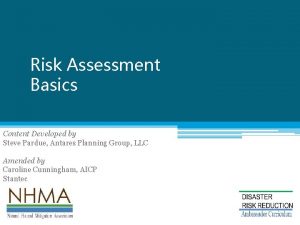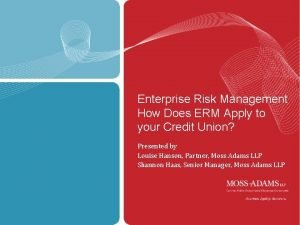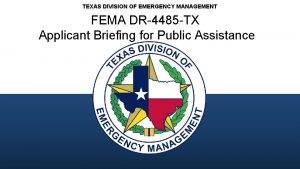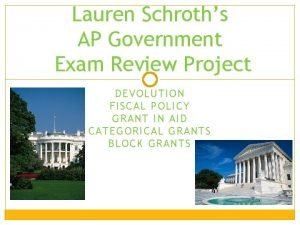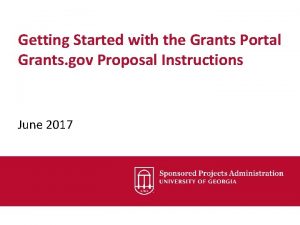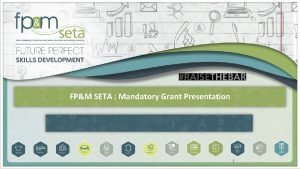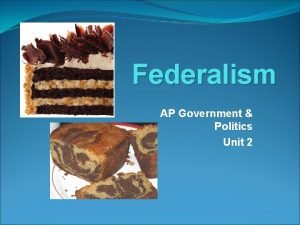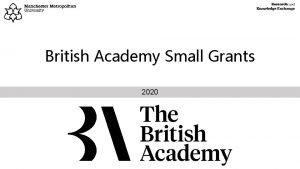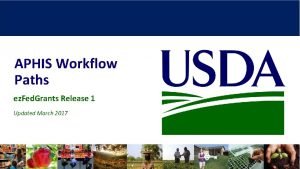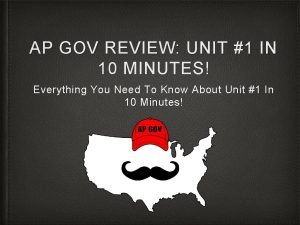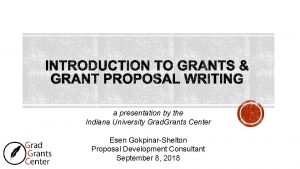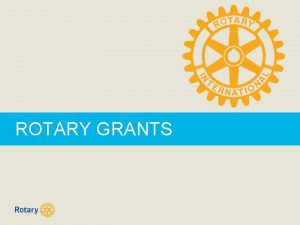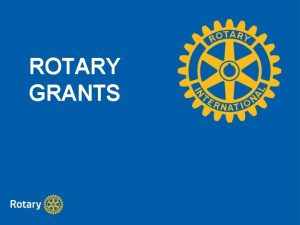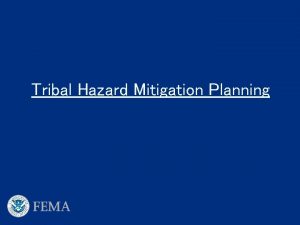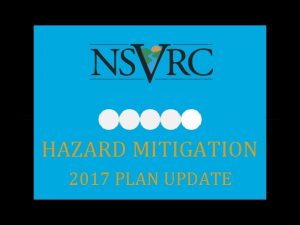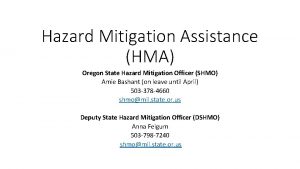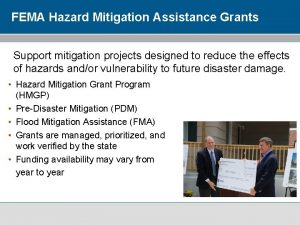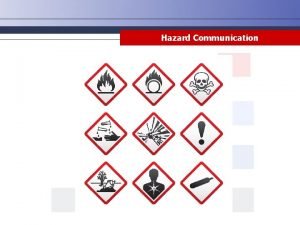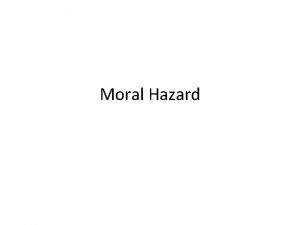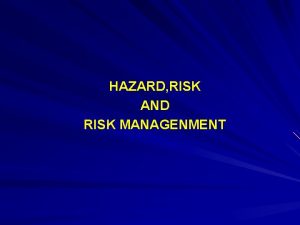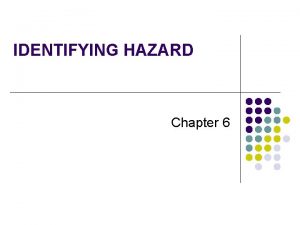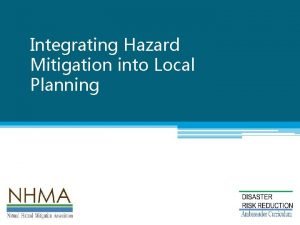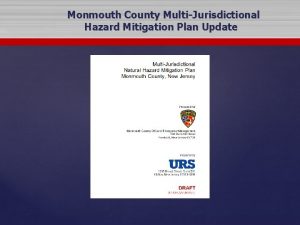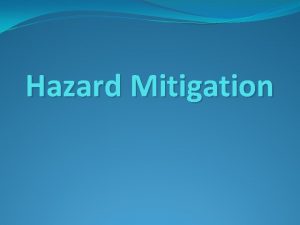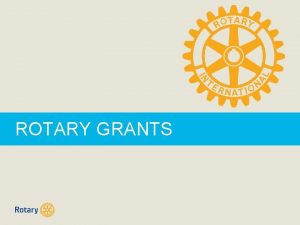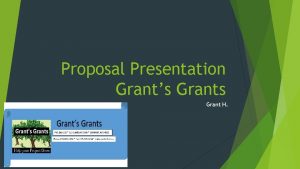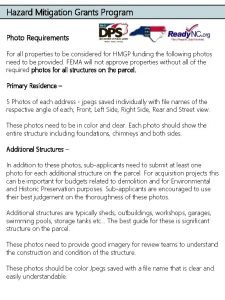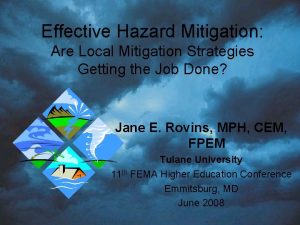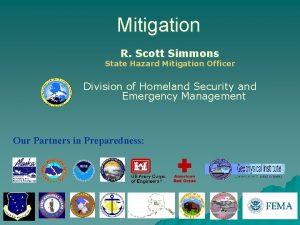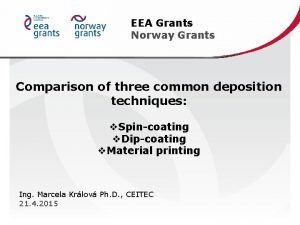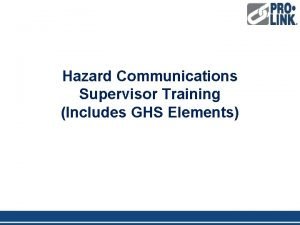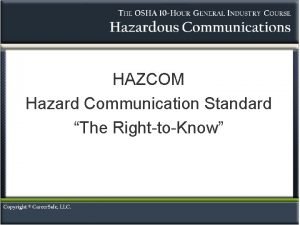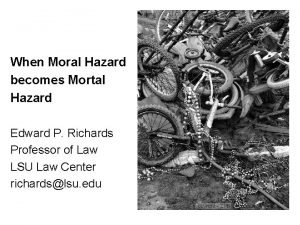Hazard Mitigation Grants Topics General Common Mitigation Mitigation

























- Slides: 25

Hazard Mitigation Grants

Topics �General Common Mitigation �Mitigation Policies �Application Development �Structural �Non-Structural �Planning �Other �Benefit / Cost �Prioritization �Technical Assistance �Allowable Costs (2 CFR Part 200) �Submittal Process �Reporting Requirements

Mitigation General Question… What does Mitigation mean to you?

Mitigation General Mitigation defined… FEMA defined Mitigation as: “Any cost effective measure that reduces or eliminates risk. ” I define Mitigation as: “Using resources today to lessen the impacts of disasters tomorrow. ”

Mitigation General �What are your risks? �How do you find out what risks are more severe to your community? �What is the best way to use limited resources to address your risks?

Mitigation General � Potential � Areas projects may be identified utilizing: identified in the local all-hazard mitigation plans. � Items identified in the State of West Virginia's All-hazard Mitigation Plan that supports the State's identified goals and / or are determined to provide the most benefit to an area increasing its resilience to hazards. � The Preliminary Damage Assessments. � Any HMGP Data Collection Reports. � Previously submitted unfunded HMGP applications. � State agency personnel and local governments involved in the development of the Section 322 Plan may provide further possibilities and applicants. � Public participation meetings.

Eligible Applicants �Local Units of Government �State Government �Certain Private Non-Profit Organizations (Through a Local Unit of Gevernment) Private Citizens CANNOT Apply Directly For Mitigation Funding to FEMA!

Grant Types �Hazard Mitigation Grant Program (HMGP) �Disaster Driven � 15% Cost of Disaster Maximum � 7% of the 15% Can be Used for Planning � 5% of the 15% Can be Used for Projects That Can’t Meet Benefit Cost Due to the Project Type. (Flood Control Structures, etc. ) �Approved and Adopted Mitigation Plan Required �Benefit Cost Ratios MUST be Met for Remainder of Funding

Grant Types �Pre-Disaster Mitigation Grant Program (PDM) �Non-Disaster Driven Congressionally Funded � 7% of the Funding Can be Used for Planning �Benefit Cost Ratios MUST be Met for Remainder of Funding for Each Structure (Stand Alone) �Nationally Competitive 18 Month Funding Cycle �Mitigation Plan Required

Grant Types �Flood Mitigation Assistance Program (FMA) �Non-Disaster Driven NFIP Funded � 7% of the Funding Can be Used for Planning � 5% of the Funding Can be Used for Technical Assistance �Benefit Cost Ratios MUST be Met for Remainder of Funding for Each Structure �FMA Approved Mitigation Plan Addressing Repetitive Loss Properties Required

Eligible Activities HMGP PDM FMA Property Acquisition/Demolition / Relocation √ √ √ Structure Elevation √ √ √ Mitigation Reconstruction X X √ Dry Flood-Proofing of Historic Residential Structures √ √ √ Dry Flood-Proofing of Non-Residential Structures √ √ √ Minor Localized Flood Reduction Projects √ √ √ Structural Retrofitting of Existing Buildings and Facilities √ √ X

Eligible Activities HMGP PDM FMA Non-Structural Retrofitting of Existing Buildings and Facilities √ √ √ Community Safe Room Construction √ √ √ Wind Retrofits √ √ X Infrastructure Retrofits √ √ X Soil Stabilization √ √ X Wildfire Mitigation √ √ X Post Disaster Code Enforcement √ X X

Eligible Activities HMGP PDM FMA Generators √ √ X Advance Assistance √ X X 5% Initiative √ X X Hazard Mitigation Planning √ √ √ Management Costs √ √ √

FY-2016 Funding � FEMA-4210 -DR-WV Due to FEMA June 28, 2016 � $6, 326, 161. 00 ($4, 744, 621. 00 Federal Share, $1, 581, 540. 00 Non-Federal Share) � FEMA-4219 -DR-WV Due to FEMA May 14, 2016 � $2, 187, 815. 00 ($1, 640, 861. 00 Federal Share, $546, 954. 00 Non-Federal Share) � FEMA-4220 -DR-WV Due to FEMA May 18, 2016 � $1, 411, 059. 00 ($1, 058, 294. 00 Federal Share, $352, 765. 00 Non-Federal Share) � FEMA-4221 -DR-WV Due to FEMA May 21, 2016 � $1, 607, 657. 00 ($1, 205, 743. 00 Federal Share, $401, 914. 00 Non Federal Share) � FEMA-4236 -DR-WV Due to FEMA Aug 7, 2016 � $1, 815, 981. 00 ($1, 361, 986. 00 Federal Share, $453, 995. 00 Non-Federal Share) � PDM-FY 2017 Due Mid 2017 � FMA-FY 2017 Due Mid 2017

CRITERIA FOR APPLICANT ELEGIBILITY �Conforms to State and Local Hazard Mitigation Plan. (Section 322). �Provides beneficial impact upon the at risk area. �Considers long-term changes to the areas and entities it protects, and has manageable future maintenance and modification requirements. �Conforms to environmental laws and regulations. Be in conformance with 44 CFR Part 9, Floodplain Management and Protection of Wetlands, and 44 CFR Part 10, Environmental. �Solves a problem independently or constitutes a functionally independent portion of a solution.

CRITERIA FOR APPLICANT ELEGIBILITY � Is cost effective. Will not cost more than the anticipated value of the reduction in damages to the area if future disasters were to occur. (Meets benefit / cost). Every effort should be made to determine the cost effectiveness of projects but where that is difficult, the project must be clearly identified as a 5% initiative project. In both cases the project should be proven to make the community more disaster resilient rather than simply restoring a function. � Meets all applicable Federal, State and Local permit requirements. (Example: Corps of Engineers permit for navigable waterways). � Constitutes a practical, effective and environmentally sound proposal. � Contributes, to the extent practicable, to a permanent or long term solution to the problem it is intended to address, rather than temporary or short term. In any case, the project should, at a minimum, be demonstrated to outlive the project useful life which was used to calculate the benefit / cost.

CRITERIA FOR APPLICANT ELEGIBILITY � Addresses the problems of floodway, repetitively and substantially damaged structures or facilities. Specifically, the State's areas of interest are: � Reduction in damage to structures or facilities located in the floodway. � Reduction in damage to repetitive loss structures or facilities. � Reduction in damage to structures or facilities considered substantially damaged. � Reduction in damages to structures and facilities considered severe repetitive loss. � Other eligible projects as described in 44 CFR Section 206. 434 (d)(2). Stream Capacity Restoration Activities � Eligible Pilot Projects �

CRITERIA FOR APPLICANT ELEGIBILITY � Adheres to the State's priorities of applications as outlines in the State Standard All-Hazard Mitigation Plan (322 Plan) and in line with priorities set by the Governor at the time of declaration. � Projects addressing FEMA identified Repetitive Loss Structures list and Sever Repetitive Loss list and pre-FIRM structures or facilities will be given priority. � Post-FIRM structures, when no evidence of proper permitting or an error on the FIRM can be shown, will only be considered for acquisition/demolition projects and the homeowner or local government will be required to provide the 25% non-federal share of the total cost of the project and all other costs associated with the application and acquisition. Such costs will be deducted from the total award.

APPLICATION PROCEEDURES �Each community submitting a Notice of Intent by the established and published deadline will either be mailed, or provided at the HMGP Workshop, a copy of the FY 2015 Hazard Mitigation Assistance Guidance with Addendum. If available, each community will be offered technical assistance in completing their application by the State Hazard Mitigation Office. Every effort will be made to ensure that such technical assistance is given in a fair and equitable manner to each community requesting assistance. �Applications for a Hazard Mitigation Grant Program project must be submitted by the Chief Executive Officer of the responsible government entity, in person or be postmarked, to the State Hazard Mitigation Office, on, or before, the designated deadline. NO EXCEPTIONS.

APPLICATION PROCEEDURES � The application must be fully completed with all supporting documents. The following documents MUST be included for private real property: � A clear scope of work. � A detail cost estimate. � Property Inventory Form. � Statement of Voluntary Participation. � West Virginia Hazardous Material Property Survey. � Substantial Damage Calculation forms if applicable. � Tax Map with the property or facility located on the map. � FIRM with the property or facility located on the map. � Photographs of all 4 sides of the structure or facility as well as a street scape. � Latitude and longitude location listed in decimal degrees.

APPLICATION PROCEEDURES � Attachments and Enclosures to be included: � � � Local unit of government letter supporting the HMGP Application. Community letter regarding impact on low income / minority individuals. Community letter regarding contamination by hazardous materials. Community letter regarding compliance with Federal Fair Housing Regulations. Topographical maps. Street maps. Sign-in sheets from public meetings. Newspaper public meeting notices and / or other material advertising HMGP meetings. Photos of damaged areas in the community (if available) to support damage impact statements made in the application. List of potential property substitutions if an over subscription is sought. Benefit / Cost analysis if appropriate.

APPLICATION PROCEEDURES � When submitting an application to FEMA, the State Hazard Mitigation Officer will prepare a project merit package containing: � A narrative recommendation and rationale for project selection in the event of more submissions than funding allows to be funded. � A certification that the projects meet all eligibility requirements as listed in Section XI of the HMGP Administrative Plan. � Any pertinent project management information not contained in the State Administrative Plan. � GAR letter submitting recommended projects to FEMA. � Environmental review data shall be included for each project enabling FEMA to conduct an environmental review in accordance with HMA Guidance 2015. The State will ensure the following: � Each property or facility has a fully completed West Virginia Hazardous Material Survey. � Photographic imagery necessary to determine the historic preservation record eligibility. � Provide FEMA all documentation necessary to comply with the National Environmental Policy Act (NEPA).

APPLICATION PROCEEDURES �Benefit / Cost analysis shall be performed in accordance with FEMA guidelines as outlined in HMA Guidance 2015 using the FEMA BCA toolkit 5. 1 or best available data. �Obtaining clearances from the State Historic Preservation Office shall be the responsibility of FEMA. �A project should be of the nature that work can begin within ninety (90) days of receipt of notice of approval and be completed within one (1) to three (3) years, depending on the complexity of the project.

Post Mitigation �Over 2, 200 Deed Restricted Mitigated Properties �Forty-Four of the Fifty-Five Counties Have Successfully Availed Themselves of Mitigation Funding �Positive Land Use to Include: �Public Parks �Public River Boat Access Points �Public Non-Paved Parking �Public Gardening Plots �Other FEMA Approved Uses

Mitigated Properties Statewide Mitigated Properties Southern West Virginia
 Natural hazard mitigation association
Natural hazard mitigation association Common risk mitigation strategy
Common risk mitigation strategy Types of market failure
Types of market failure Aice general paper discursive essay
Aice general paper discursive essay Highest common factor of 12 and 42
Highest common factor of 12 and 42 Common anode and common cathode
Common anode and common cathode Factors of 60 and 72
Factors of 60 and 72 Lowest common factor
Lowest common factor Find the lcm of 16 24 36 and 54
Find the lcm of 16 24 36 and 54 Highest common factors and lowest common multiples
Highest common factors and lowest common multiples Planos en cinematografia
Planos en cinematografia Where did general lee surrender to general grant?
Where did general lee surrender to general grant? Tdem grants management system
Tdem grants management system Ez fed
Ez fed Noaa grants online
Noaa grants online Grants ap gov
Grants ap gov Emd serono grant portal
Emd serono grant portal Grants portal uga
Grants portal uga Seta grants
Seta grants Grants ap gov
Grants ap gov Ez fed grants
Ez fed grants Ba flexigrant
Ba flexigrant Arts council national lottery project grants
Arts council national lottery project grants Ez fed grants
Ez fed grants Grants ap gov
Grants ap gov Iu grad grants
Iu grad grants
